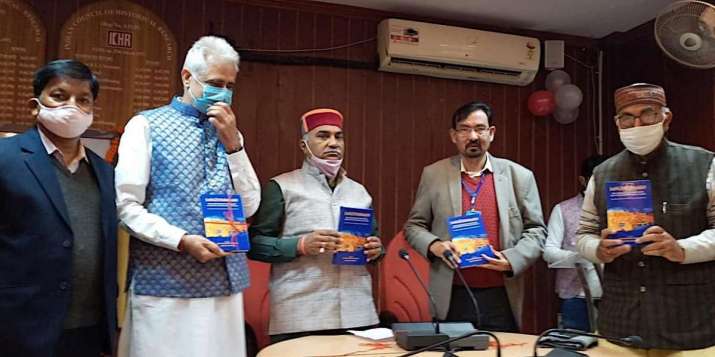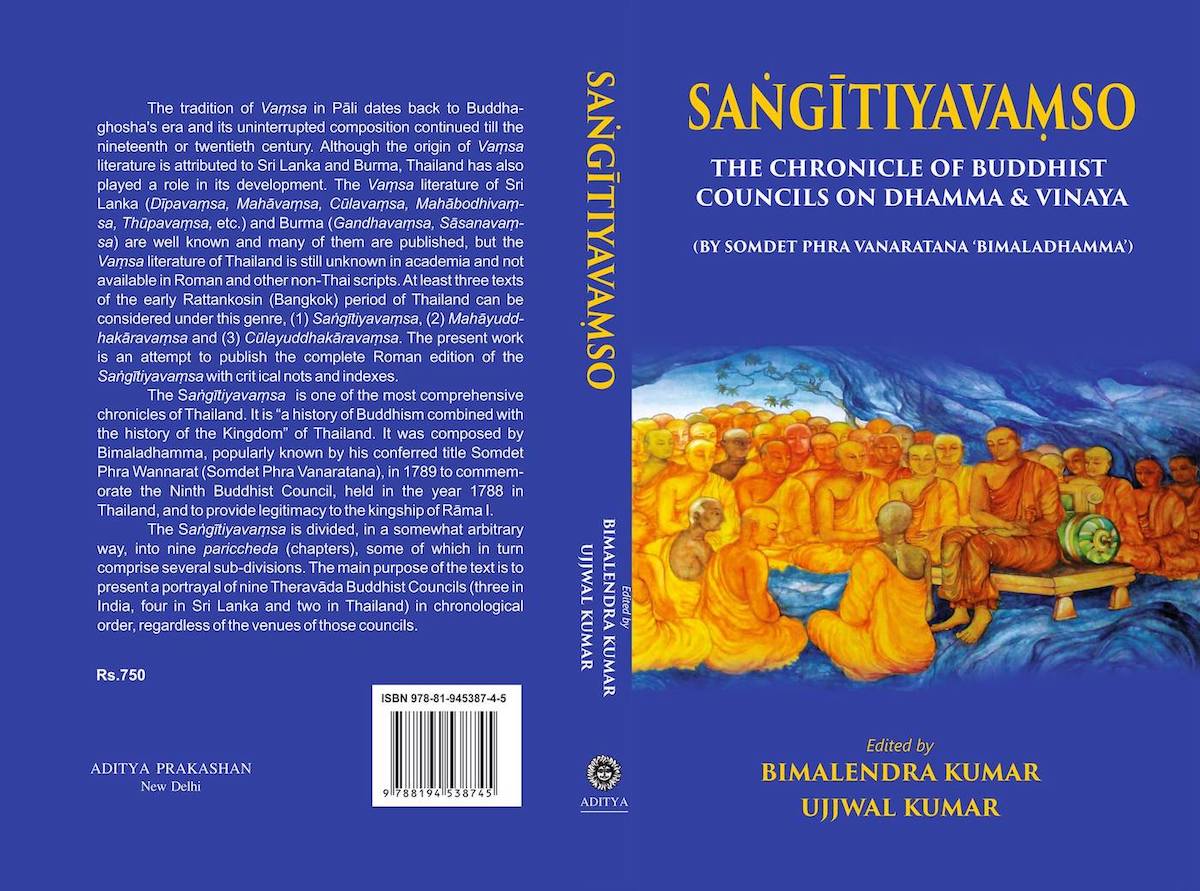
Indian Buddhist scholars Prof. Bimalendra Kumar and Dr. Ujjwal Kumar have released a newly edited book titled Sangitiyavamso: The Chronicle of Buddhist Councils on Dhamma & Vinaya. The editors describe the book, published by Aditya Prakashan, New Delhi, as one of the most comprehensive chronicles of Thailand, combining a history of Buddhism with the history of the kingdom.
A book launch was held on 4 January in the presence of distinguished scholars, including Prof. Kumar Ratnam, Prof. K. T. S. Sarao, and Dr. Balmukunda Pandey in the conference hall of the Indian Council of Historical Research in New Delhi.
“Until now, the mainstream Pali literature contains texts from the Sri Lankan and Burmese traditions. Pali texts related to the Thai tradition have so far been missing from the eyes of scholars. In this order, the Pali text Sangitiyavamsa, composed in 1789 by Bimaladhamma, is an important publication which was hitherto unavailable to students of Pali,” Dr. Ujjwal Kumar told Buddhistdoor Global. “The main objective of the text is to provide information on Buddhist councils as well as the history of Thailand. This book contains historical information which will be important material for those who are interested in Thai Buddhism.”
The Sangitiyavamsa was composed by Bimaladhamma, popularly known by his conferred title Somdet Phra Wannarat (Somdet Phra Vanaratana), in 1789 to commemorate the Ninth Buddhist Council, according to Thai tradition, held in Thailand in 1788, and to provide legitimacy to the reign of King Rama I (r. 1782–1809). In addition to writing the Sangitiyavamsa, Bimaladhamma also composed two other Pali works: the Mahayuddhakaravamsa, which is a Mon chronicle depicting King Rajadhiraja’s war with the Burmese, and the Culayuddhakaravamsa, an Ayudhaya chronicle depicting sequenced stories of the first kings of the Ayudhaya Kingdom until the reign of King Indaraja.
The Sangitiyavamsa was first published in Thailand in 1923 in Thai script with a Thai-language translation. The current edition has reproduced only the Pali section of the 1923 printed edition, converted from the Thai script to the Roman script, along with collation with other Pali texts.

“The Vamsa literature of Sri Lanka (Dipavamsa, Mahaavamsa, Culavaṃsa, Mahabodhivaṃmsa, Thupavamsa, and so on) and Burma (Gandhavamsa, Sasanavaṃmsa) are well known and many of them are published, but the Vamsa literature of Thailand is still unknown in academia and not available in Roman and other non-Thai scripts,” the editors state in the introduction to the book. “The present work is an attempt to publish for the first time the complete Roman edition of the Sangitiyavamsa.”
The book contains nine chapters, some of which consist of several sub-sections, in addition to a detailed introduction. The main purpose of the volumeis to present a portrayal of the nine Theravada Buddhist Councils (three in India, four in Sri Lanka, and two in Thailand) in chronological order, regardless of the venues of those councils.
Of the editors, Prof. Bimalendra Kumar heads the Department of Pali and Buddhist Studies at Banaras Hindu University in Varanasi, India. His areas of interest are Pali, Theravada Buddhism, Pali literature, Buddhist philosophy (Abhidhamma Philosophy), and Tibetan Buddhism. Dr. Ujjwal Kumar is associate professor and head of the Department of Buddhist Studies at the University of Calcutta in Kolkata. His major contribution in the field of Pali studies is the Devanagari edition and Hindi translation of Pali niti texts, the Lokaniti, the Pali-Canakyaniti, the Maharahanati.
“The Sgv [Sangitiyavamsa], which culturally and intellectually integrates the three civilizations, namely, India, Sri Lanka, and Thailand, has a special relevance today,” said Prof. Bimalendra Kumar and Dr. Ujjwal Kumar. “The new Roman edition of the Sgv can well serve as a unique cultural concord among the people of India, Sri Lanka, and Thailand. It is a powerful example of the cosmopolitanism of Pali as the language of the Theravada Buddhism, which travelled from India to Sri Lanka and Thailand through the Tipitaka and its own histories of development and recension.”
Related news from Buddhistdoor Global
Korean Nun Publishes New Book on Buddhist Cuisine to Heal Mind and Body
17th Karmapa’s Prayers for a Time of Pandemic Available as a Free eBook
The Buddhist on Death Row: Book on Jarvis Jay Masters Released
Music Icon Tina Turner Turns to Buddhist Principles in New Book














